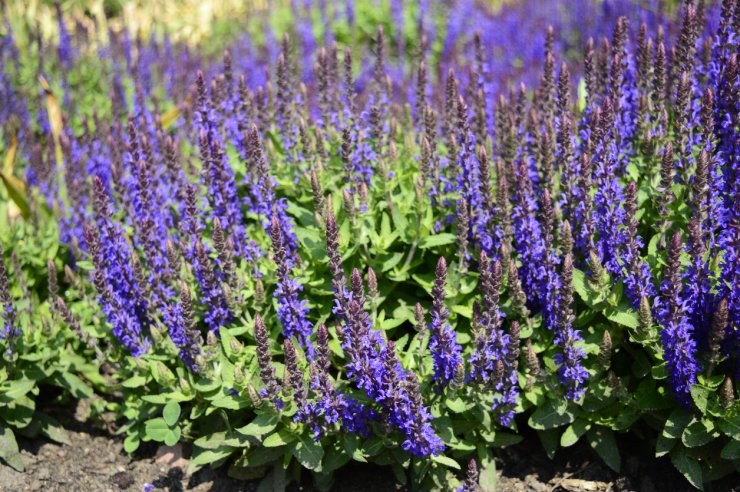
Flowering, ornamental sage
Sage comes in three main types: culinary, medicinal, and ornamental—though many species can do double duty. Culinary sage offers the best taste for enhancing recipes. Medicinal sage varieties work best for teas and medical applications. Ornamental sage smells lovely and looks beautiful in your garden, on a windowsill, or in bouquets.
Culinary sage types are what you see in most gardens. Common or garden sage is the most recognizable, with its silvery green, elongated, and slightly leathered oval leaves. When it blooms, sage puts forth spears of purple flowers. Other top culinary sages include purple sage, golden sage, and tri-color sage. Fresh culinary sage has an earthy, robust flavor with a little zing to it. Even though it comes from the mint family, that zing comes across as slightly lemony. In addition to using it in cooking, culinary sage has medicinal properties and makes a soothing tea.
Medicinal sage is similar to culinary sage in that both types offer health benefits. Some sage plants particularly lend themselves to medicinal purposes, such as pineapple sage, which has a minty taste and more pointed, mint-like leaves. The oil from clary sage is known to have calming properties—but the oil is for topical use only and is not to be ingested, though the plant itself is edible. For spiritual healing and purifying, white sage is the variety of choice.
Ornamental sage, strictly speaking, is just for show and not edible. Red sage adds a spark of color, is easy to grow, and its scent repels deer. Victoria blue will attract butterflies to its long-lasting blue flowers. And variegated sage, spectacular with its blue-green and chartreuse leaves and purple stems, does double duty as it can also be used in cooking and to make teas. Honestly, all salvias bring beauty to the garden.
Do you grow different types of sage? Which ones do you grow and why? Please tell us how you use your salvia harvest—and what you do with an abundance of sage. Do you freeze it? Or do you give it away to family, friends, and neighbors to enjoy? Please tell us in the comments below.


 Previous
Previous

